Solar panels convert sunshine into renewable electricity. They come in all shapes and sizes, from durable thin-film solar panels to intricate sculptural photovoltaic installations that harness green energy.
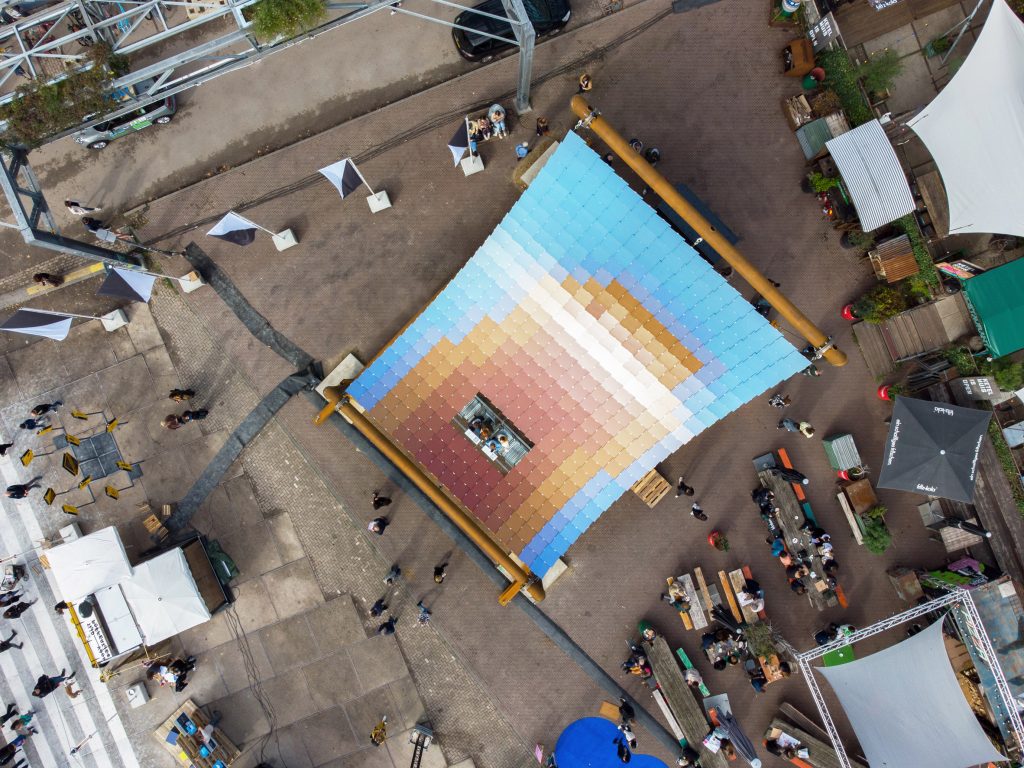
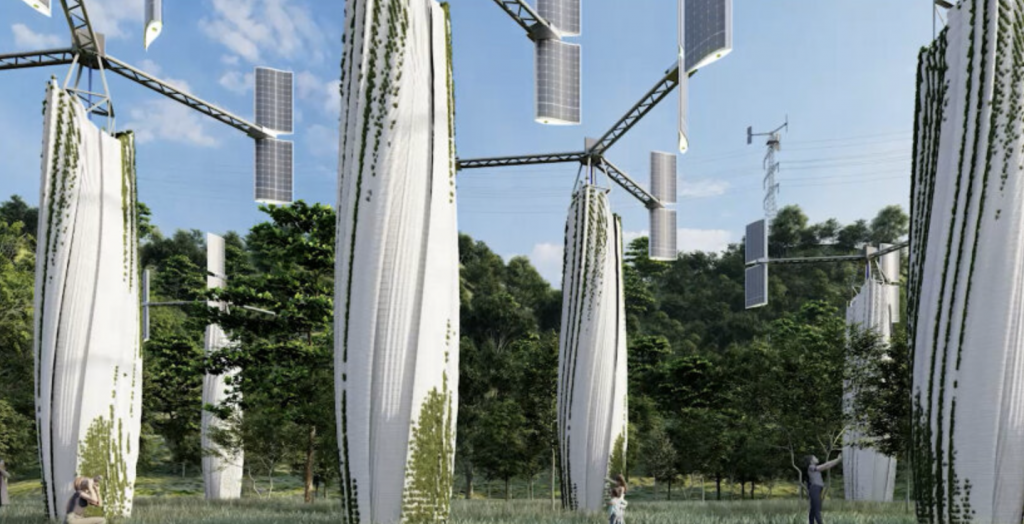
Wind turbine by Soleolico
It took energy company Soleolico ten years of research and 30 prototypes to develop what it calls the world’s first wind turbine with photovoltaic panels anchored on rotating blades that capture wind and solar energy to generate electricity 24/7. The innovative technology includes a patented magnetic system that calibrates the wind orientation of each wind turbine with solar panels to absorb energy at 360 degrees.
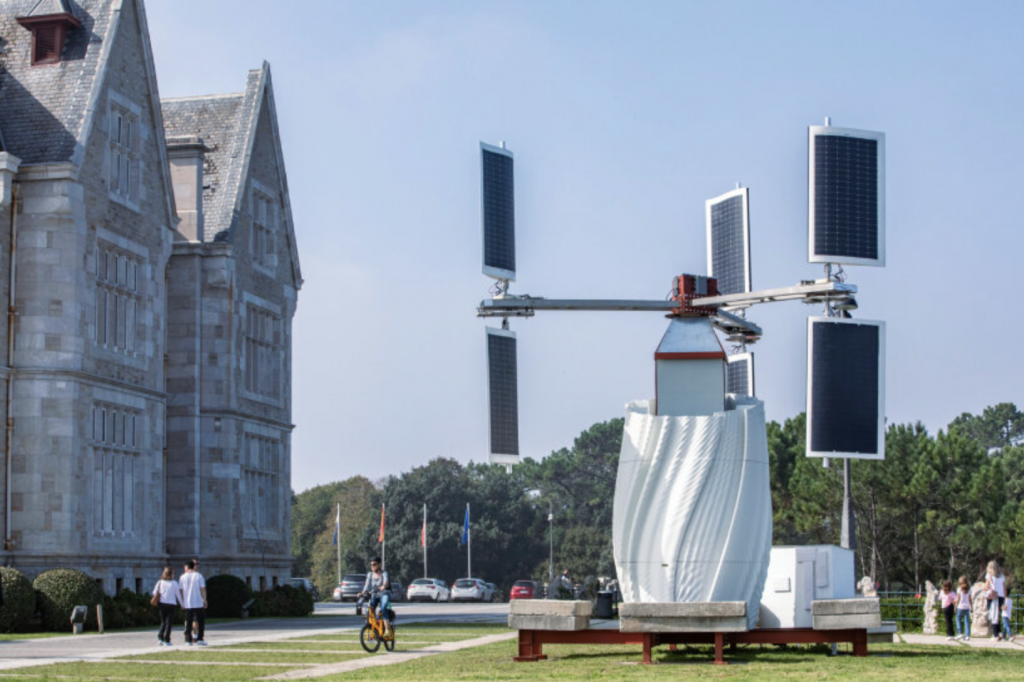
Wind turbine by Soleolico
The bark- and trunk-like white 3D-printed exterior that covers the structure uses Pure.Tech technology by LaMáquina, a collaborator for the project. The coating can absorb and convert greenhouse gases into purified clean air.
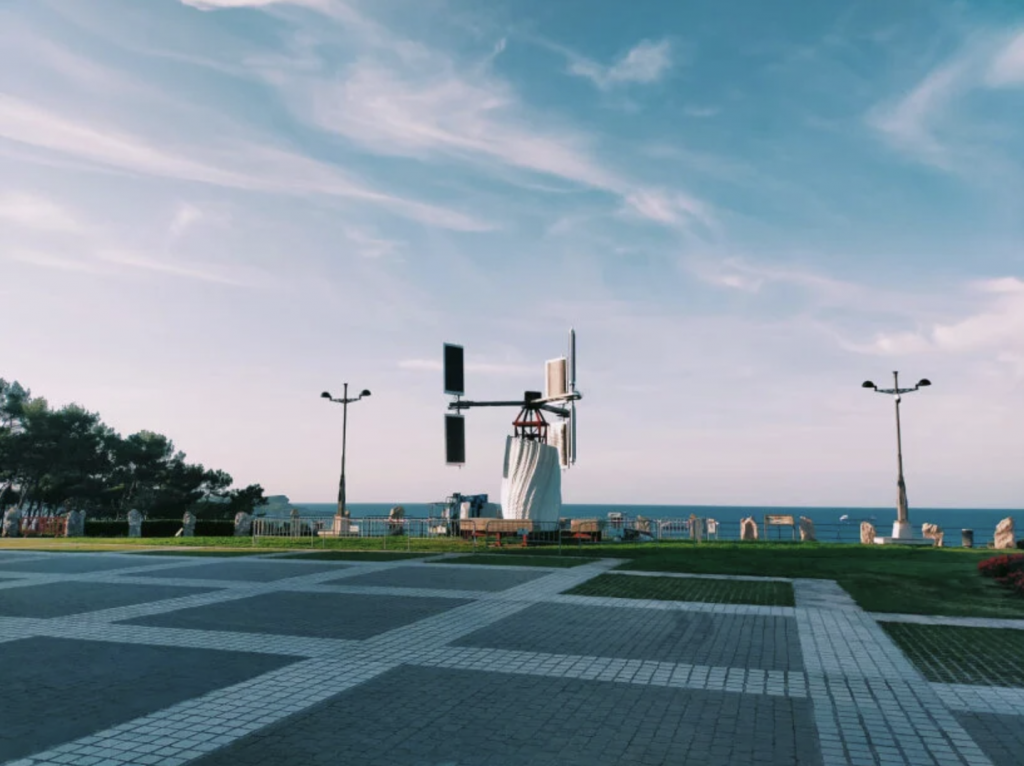
Wind turbine by Soleolico
The project combines wind and solar generation and storage in a single unit. Since it harnesses green energy from both wind and solar, the turbine ensures consistent energy availability. The company also claims that the technology generates no noise and enables birds to safely rest on top of the wind turbine.
The compact and versatile design is helps avoid complex installation processes and soil disruption.
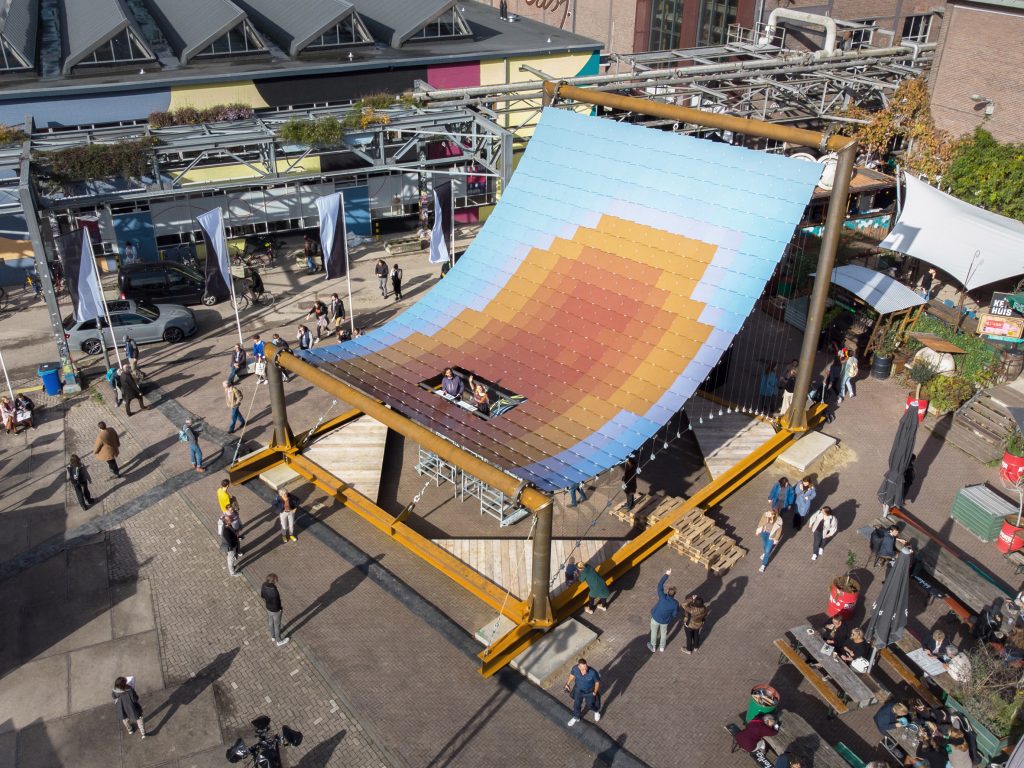
Solar Pavilion by V8 Architects and Marjan van Aubel Studio (also header image)
Designed by V8 Architects and Marjan van Aubel Studio for this year’s Dutch Design Week, the Solar Pavilion was intended as a space to experience the poetic power of the sun. The pavilion served as a gathering space where visitors could experience the sensory nature of solar energy.
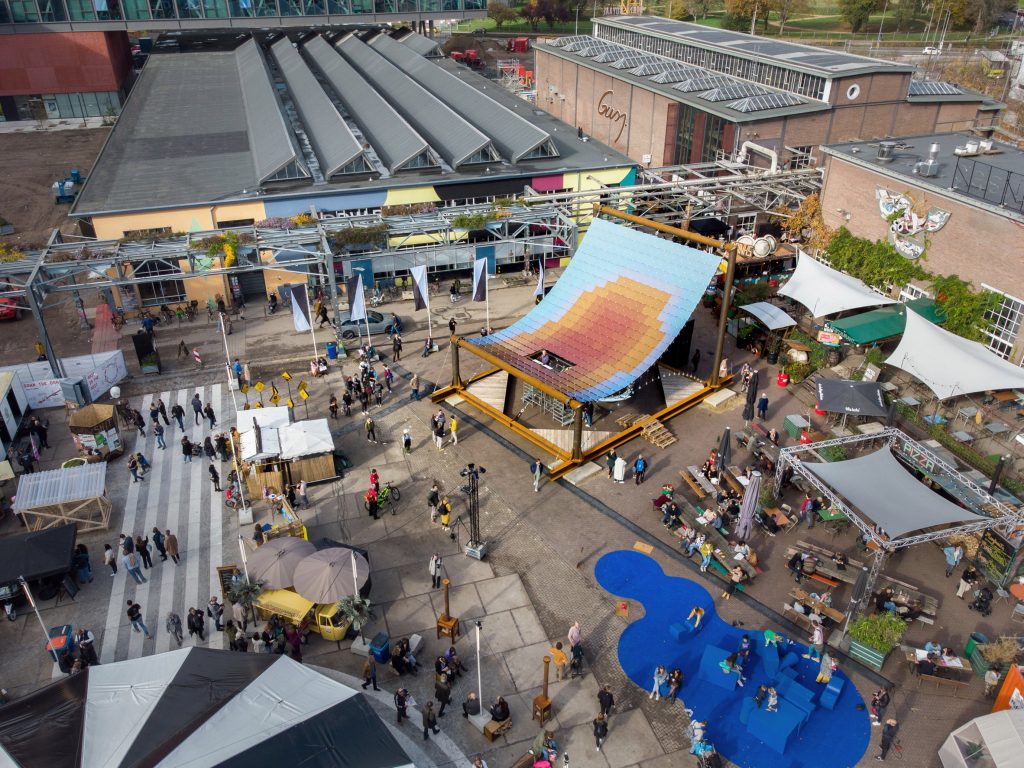
Solar Pavilion by V8 Architects and Marjan van Aubel Studio
The pavilion was designed to resemble a giant beach chair, in a nod to the fact that it offers visitors a place to rest after seeing the designs on display at the design festival. Acting as a ‘solar cloth’, the curved roof of the pavilion formed from multicoloured photovoltaic panels harvested the sun’s energy to then use it to light and heat the dark space underneath.
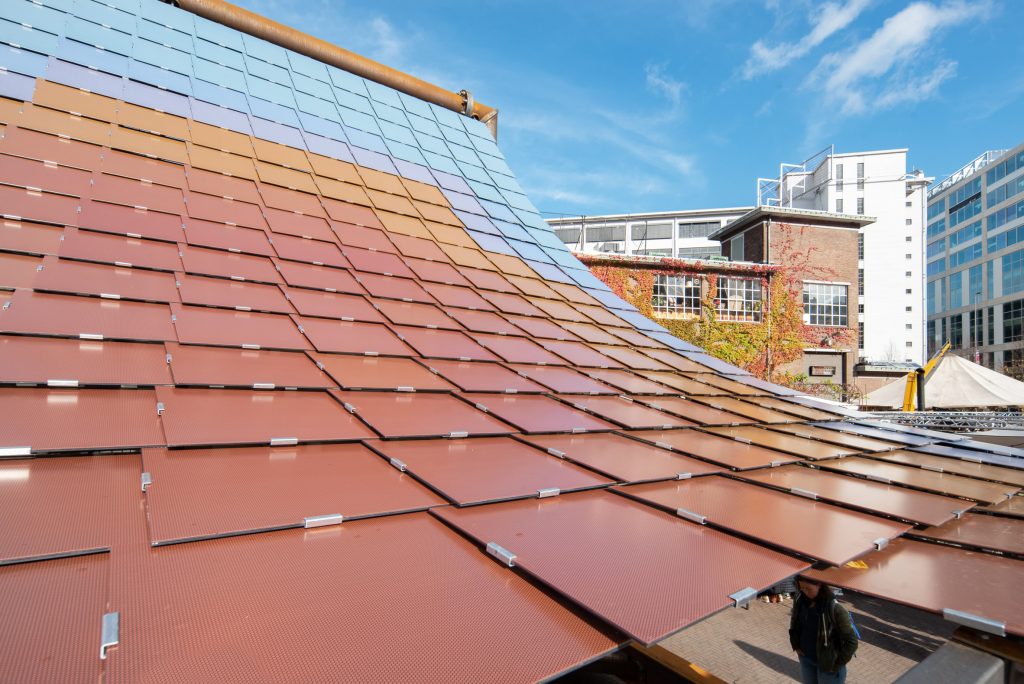
Solar Pavilion by V8 Architects and Marjan van Aubel Studio
Approximately 7.5 kilowatts of energy produced by the swooping solar roof was collected into an on-site battery and used at night to power lighting and electric heating panels mounted on the underside of the pavilion. This created an impressive experience mimicking the sensation of sitting in the sun during the day.
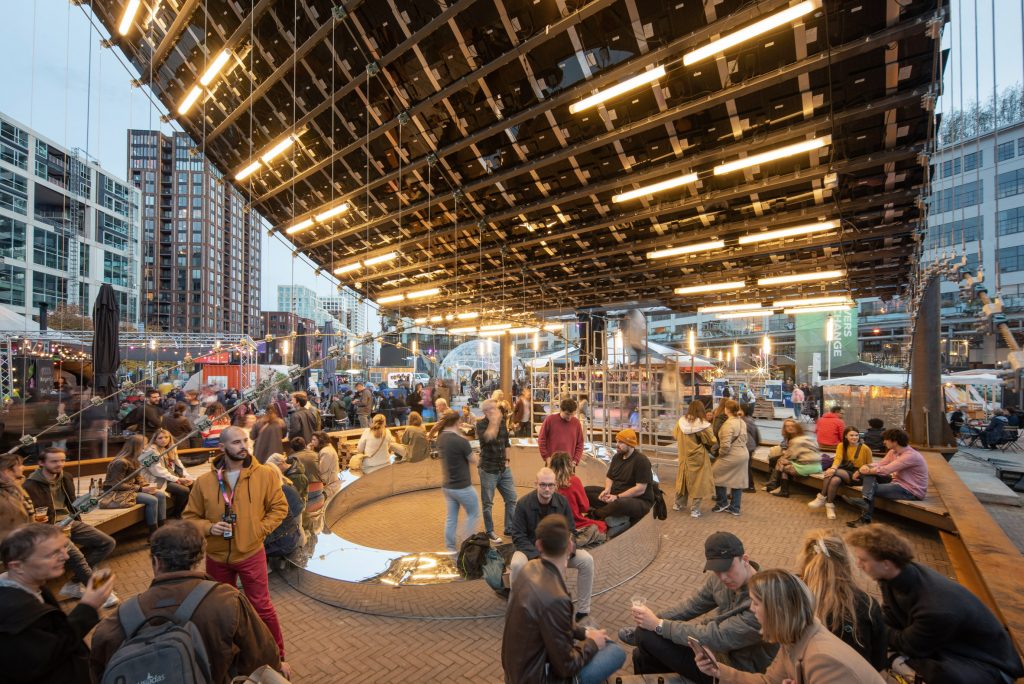
Solar Pavilion by V8 Architects and Marjan van Aubel Studio
Underneath, triangular timber sections were slotted into the corners of the steel beams to serve as seating, while a circular bench designed by Marjan van Aubel Studio occupied the centre of the space.
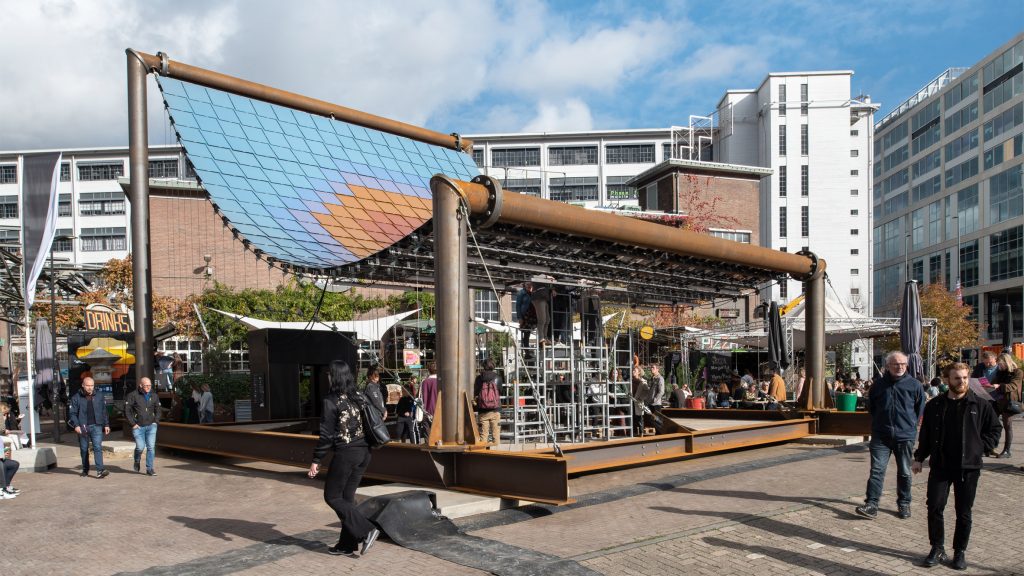
Solar Pavilion by V8 Architects and Marjan van Aubel Studio
Masts, tension wires and reclaimed floor beams made from untreated steel supported the structure that was intentionally designed reversible, so it could be easily disassembled, its parts reused and its materials returned to the companies that had provided them.
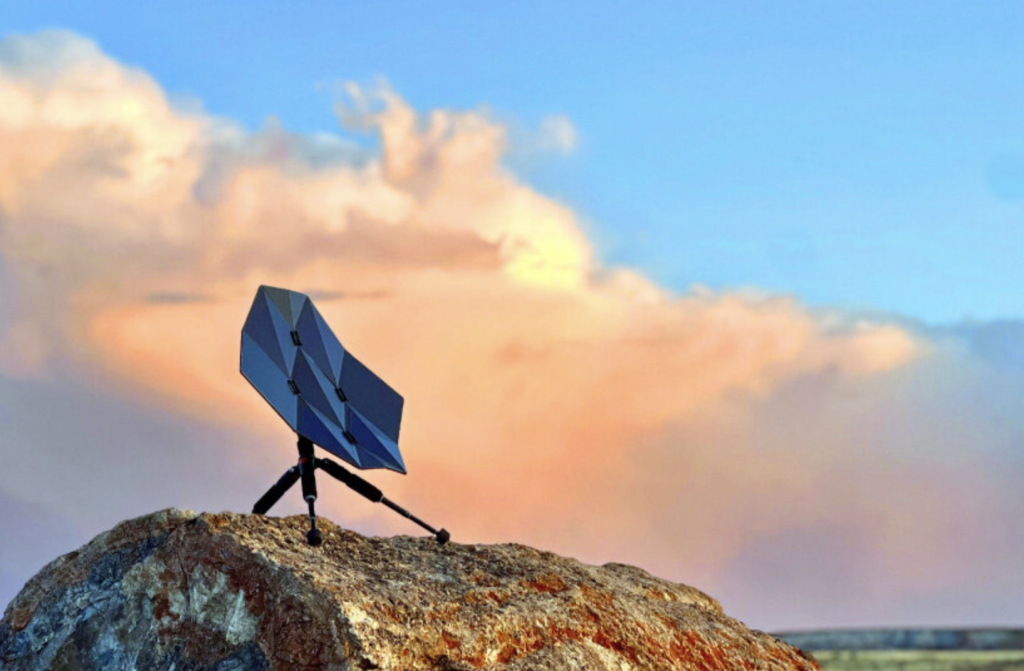
Sego Charger
Designed by the creative minds of Ian Esplin, Jacob Sheffield, and Diana Balaños, Sego Charger is a foldable origami solar panel that can be folded down to fit into a backpack and provide travelers with a portable photovoltaic power source when on an off-grid trip. Having a 25-watt power rating, the solar panel can be used to charge personal devices, as well as ravel equipment including GPS and radio transmitters.
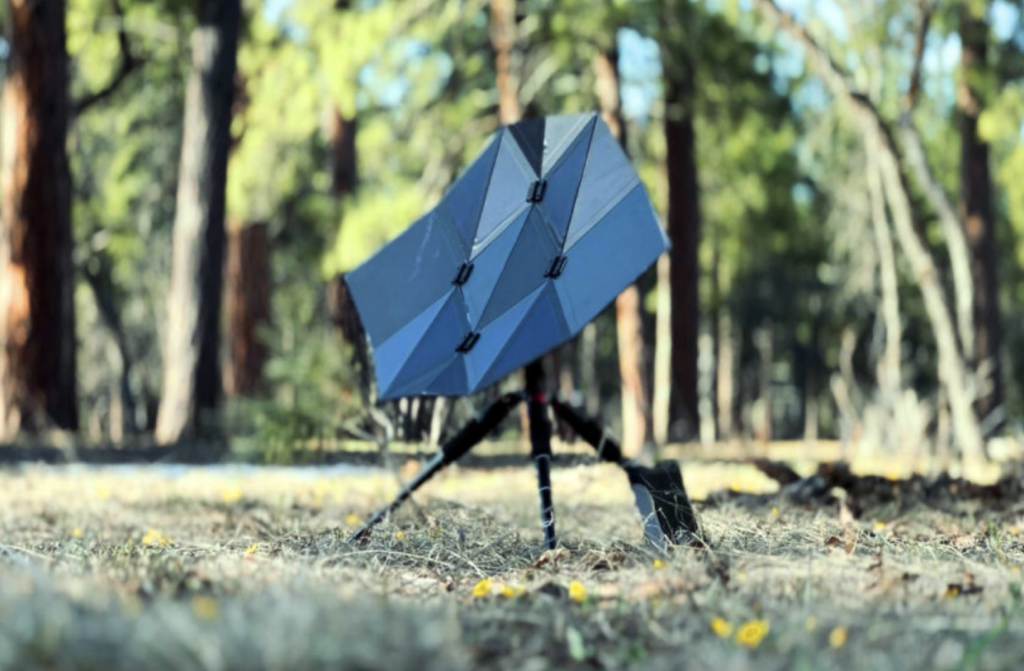
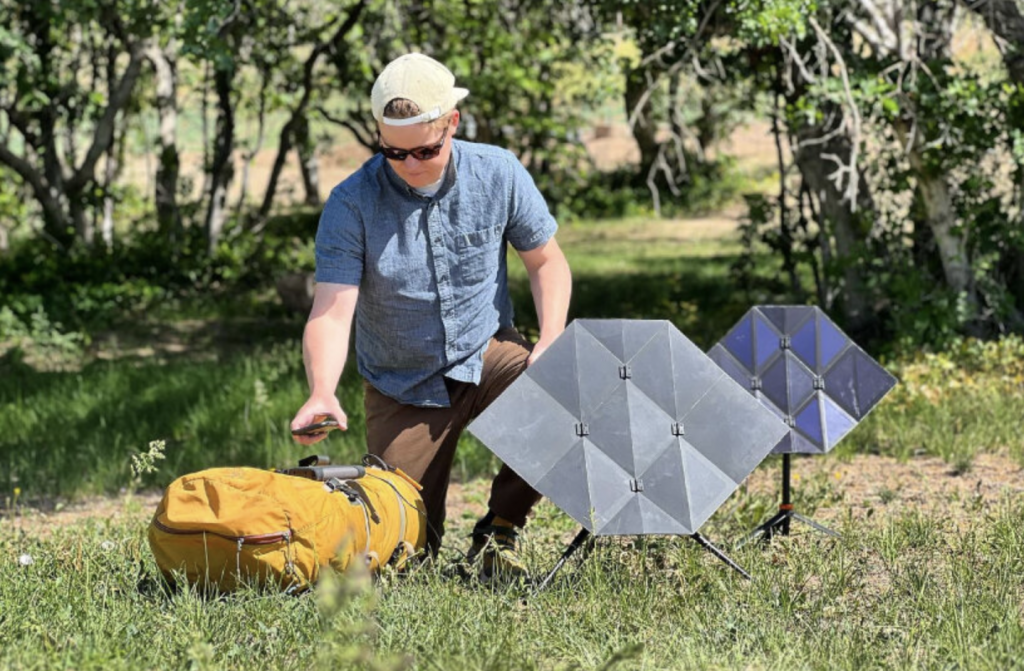
Sego Charger
The team looked the research of NASA engineers who conceived a similar origami technique for its deployable-space-based solar arrays. The resulting design is as durable as it is compact. It relies on the robust visible hinges, which distribute weight evenly and provide a solid connection between the components to ensure backpacking enthusiasts can fold and unfold the structure thousands of times. Ethylene Tetrafluoroethylene, a fluorine-based plastic, which the team used to laminate the solar panel, guarantees water resistance and makes it dust– and dirt-proof.
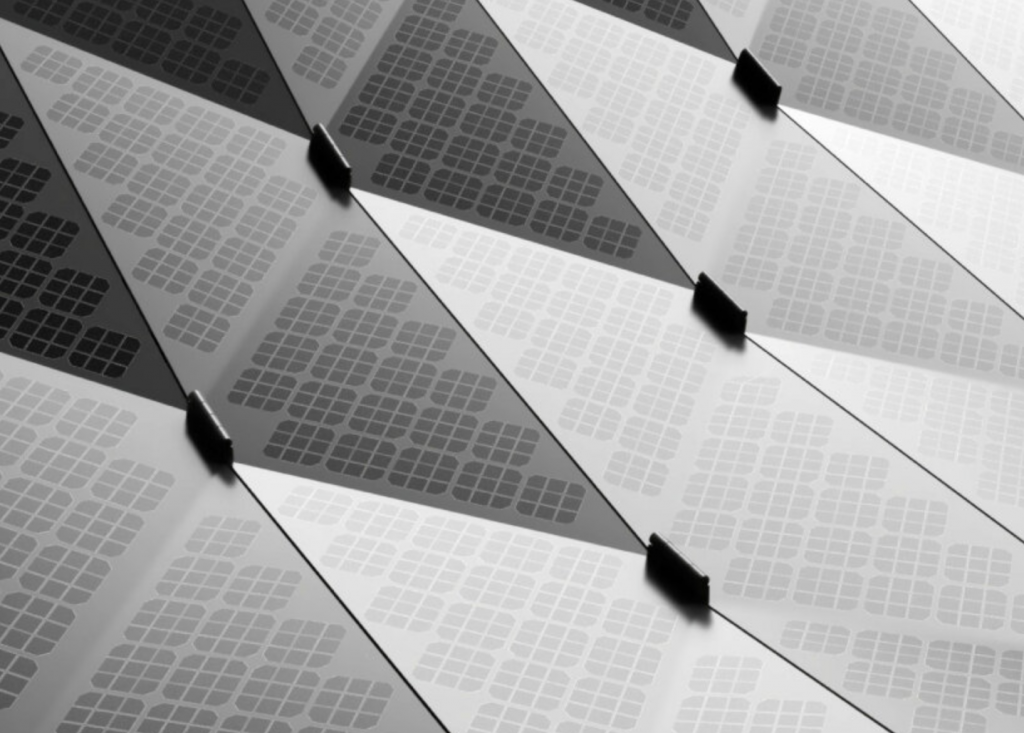
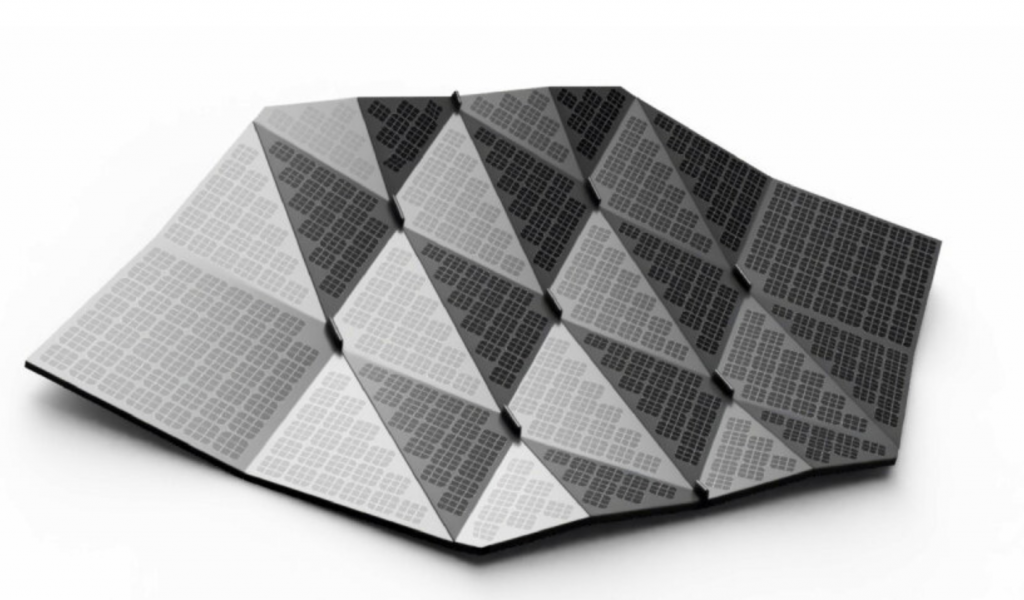
Sego Charger
Sego Charger team hopes that by the second quarter of 2024 the foldable solar panel will be also available in higher-watt options – as 50-watt, 100-watt, and even over 400+-watt panels, which can charge portable fridges and travel-reader heaters.